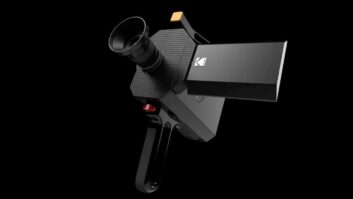Egham, United
Kingdom – Worldwide mobile device sales to end users totalled 325.6 million
units in the second quarter of 2010, a 13.8 percent increase from the same
period in 2009, according to Gartner.
Smartphone sales
to end users accounted for 19 percent of worldwide mobile device sales, an
increase of 50.5 percent from the second quarter of 2009.
“Although the
mobile communication devices market showed double-digit growth this quarter,
average selling prices (ASPs) were lower than expected and margins fell,” said
Carolina Milanesi, research VP at Gartner. “We attribute the decline in ASPs to
a stronger dollar, a depreciating euro, and intense competition that drove
price adjustments and changes to the product mix.” Manufacturers such as LG and
Samsung pursued market share in a low-margin market but this approach proved
risky, as shown by LG’s decline of 27.8 percent in ASP in the second quarter of
2010.
While new product
introductions from Apple, HTC and Motorola, along with the drop in ASPs, drove
strong sales of smartphones, shortages of components, such asAMOLED displays
impaired sales volumes of some of the more popular new smartphones, the
research company said.
The second quarter
also saw some movement in the top 10 mobile device manufacturer rankings. HTC
made its debut in the top 10 worldwide ranking, holding the No. 8 position with
139.1 percent growth year on year. This reflects the popularity of its Android
portfolio but also a more aggressive branding strategy compared to the same
period in 2009.
Gartner reported
that in the second quarter, Nokia’s mobile device sales to end users reached
111.5 million units and a share of 34.2 percent. But good-quality, well-priced
products were not enough to maintain Nokia’s leadership in the high-end sector,
Gartner said, which caused Nokia to lose 2.6 percentage points year on year.
Nokia’s senior executives need to do more to attract developers and other
ecosystem members by revising its platform strategy and improving its
communications, Gartner said.
Samsung sold 65.3
million devices in the second quarter of 2010 that translated into a 20.1
percent market share. Although Samsung’s sales were strong in developing
markets, its shift in product mix caused an overall decline in ASP. Samsung
maintained its position in the midtier by launching several new devices,
including messaging handsets. This more aggressive strategy toward the mass
market enabled it to reduce inventory in the second quarter.
Research In Motion
(RIM)’s mobile device sales to end users reached 11.2 million units in the
second quarter of 2010, confirming RIM’s position as the fourth largest brand
with a share of 3.4 percent this quarter. New devices running BlackBerry OS 6.0
— such as RIM’s first touchscreen QWERTY slider, the Torch — will be available
from the third quarter of 2010. Gartner said
will still appeal more to business users than to consumers and
will stop many loyal BlackBerry users defecting to other platforms, but it
won’t attract many new users to the brand.
Apple’s mobile
device sales reached 8.7 million units or a 2.7 percent share of the overall
mobile device market, but a 14.2 percent of the smartphone market. Apple
maintained its No. 7 position in the worldwide mobile device market and held
the No. 3 position in the worldwide smartphone market. Apple’s sales would have
been higher if it had not had to face tight inventory management in preparation
for the arrival of the iPhone 4 at the end of the second quarter of 2010. Apple
also suffered from some supply constraint on the new device.
A wider global
rollout of iPhone 4 will sustain Apple’s sales momentum throughout the second
half, the research company said.
In the smartphone
operating system market, Android expanded rapidly in the second quarter of
2010, overtaking Apple’s iPhone OS to become the third-most-popular OS in the
world (see second table). In the U.S, it also overtook RIM’s OS to become the
No. 1 smartphone OS in this region. “A non-exclusive strategy that produces
products selling across many communication service providers (CSPs), and the
backing of so many device manufacturers, which are bringing more attractive
devices to market at several different price points, were among the factors
that yielded its growth this quarter,” said Milanesi.
Smartphone sales
to end users totaled 61.6 million units in the second quarter of 2010, a 50.5
percent increase from the same period in 2009. The top four smartphone OS
vendors exhibited growth in the second quarter of 2010, and accounted for 91
percent of the worldwide smartphone OS market, up 6 percent year on year.
Gartner said CSPs
will increasingly offer more affordable tiered data plans to users. Tiered data
plans will make smartphones more accessible to different market segments and
help make smartphones the dominant device category in mature markets. This
means that total cost of ownership will be lower, and new users will face less
of a barrier to entry.
Additional
information may be found in the Gartner report “Competitive Landscape: Mobile
Devices, Worldwide, 2Q10,” which is available on Gartner’s website at
.













